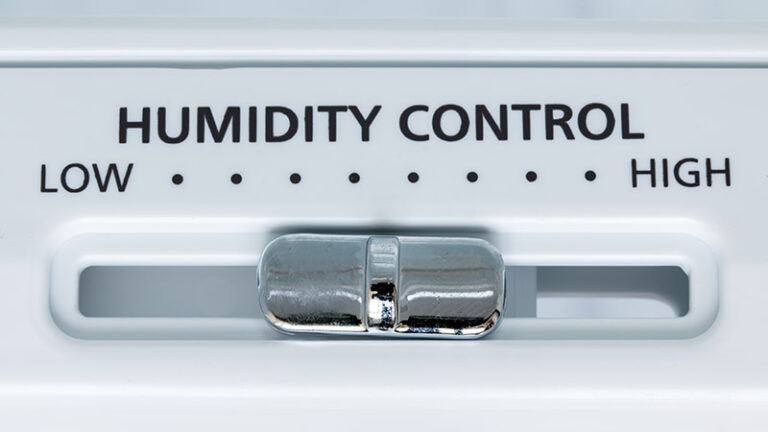Environmental testing is an important part of keeping our environment safe, healthy, and sustainable. Temperature and humidity control are two key components that help ensure the integrity of environmental tests. This article examines the importance of temperature and humidity control in environmental testing, as well as its impact on accuracy, safety, and cost-effectiveness.
By understanding the purpose behind these controls, we can better understand their role in safeguarding our environment from potential threats such as climate change or hazardous pollutants. Additionally, this article will explore how temperature and humidity control can help protect those conducting environmental tests from physical harm due to extreme conditions. Finally, this article will also discuss some best practices for implementing effective temperature and humidity management strategies when conducting environmental testing.
Benefits of Controlling Temperature and Humidity in Environmental Testing
Controlling temperature and humidity are essential elements when it comes to environmental testing. Ensuring that the environment is stable helps reduce variables and increase accuracy, which can be crucial in many industries like aerospace, automotive, or medical device manufacturing. There are multiple benefits of controlling temperature and humidity during environmental testing:
- Increased reliability – Temperature and humidity control ensures that test results will be consistent throughout the process. This means that data collected from tests can be accurately compared over time for analysis purposes.
- Cost savings – By maintaining a controlled environment with reliable temperatures and humidity levels, companies can save money by not needing to replace equipment due to wear and tear caused by extreme temperatures or moisture changes.
- Improved safety – Controlling the temperature and humidity helps create a safer working environment as employees won’t have to work in extreme conditions which could lead to accidents or other incidents onsite. Additionally, equipment used for testing will last longer with proper maintenance of temperatures/humidity levels ensuring that it complies with all safety standards required by industry regulations.
Strategies for Maintaining Accurate Temperature and Humidity Levels During Environmental Tests

When conducting environmental tests, it’s important to maintain accurate temperature and humidity levels. This can be difficult as fluctuations in the environment can have a significant impact on the results of these tests. To ensure that your testing is reliable and valid, there are several strategies you should employ. The first strategy is to use automated monitoring systems that keep track of changes in temperature and humidity over time. By utilizing this technology, you’ll be able to quickly identify any shifts in the environment so that adjustments can be made before they affect test outcomes.
Additionally, these systems allow for record-keeping which will come in handy when verifying or comparing test results against data from other times or locations. Another strategy is to utilize proper insulation within the facility where tests are performed; this helps minimize external influences on internal conditions such as extreme temperatures outside impacting those inside of a building. Furthermore, regular maintenance checks should also be conducted on air conditioning units and fans used during testing periods since malfunctioning equipment could lead to inaccurate readings.
Finally, developing robust protocols governing how personnel interacts with environmental tests is essential for producing consistent results; this includes things like wearing appropriate clothing (e.g., no heavy coats) and preventing any sudden movements that might disrupt airflow patterns during measurements being taken. With proper guidance provided upfront about expectations as well as clear rules governing what constitutes acceptable behavior while performing tests, it becomes easier for staff members to follow them consistently across multiple experiments yielding better quality data points than if they were left unchecked or unacknowledged altogether.
Challenges to Achieving Ideal Conditions in Environmental Testing Laboratories
One of the biggest challenges facing environmental testing laboratories is achieving ideal conditions for accurate results. Temperature and humidity are two of the most important factors in this regard since they can drastically affect the accuracy of test results if not monitored properly. Maintaining stable temperatures and humidity levels requires a great deal of vigilance from lab technicians, meaning that any changes must be detected quickly before they have an impact on results. Additionally, labs must invest in reliable temperature and humidity control systems to ensure conditions remain within desired ranges at all times.
Furthermore, labs may also need to implement safety protocols such as air filtration or water purification systems to reduce contaminants that could interfere with test accuracy. Finally, there are costs associated with implementing these measures which can make it difficult for some organizations to afford them without compromising other areas of their operations.
Potential Consequences of Poorly Regulated Environment Testing Conditions

The potential consequences of poorly regulated environment testing conditions are far-reaching and can have a serious impact on safety and reliability. Without the proper temperature and humidity control, test results may be inaccurate or unreliable due to environmental changes during the experiment. This could lead to false conclusions that cannot be relied upon when making decisions about product quality or performance. Additionally, if not properly monitored, equipment used for testing could become damaged from extreme temperatures which would require costly repairs or replacements. Furthermore, air pollutants such as dust particles can cause contamination in sensitive tests which can ultimately affect their accuracy as well.
Poorly regulated environmental testing conditions also create unsafe working conditions for personnel involved in executing experiments as they put them at risk of developing health issues due to prolonged exposure to extreme temperatures or high levels of humidity without adequate protection. Therefore temperature and humidity control measures must be taken into account when conducting any form of environmental testing to ensure accurate results and safe working practices are maintained throughout the process.

